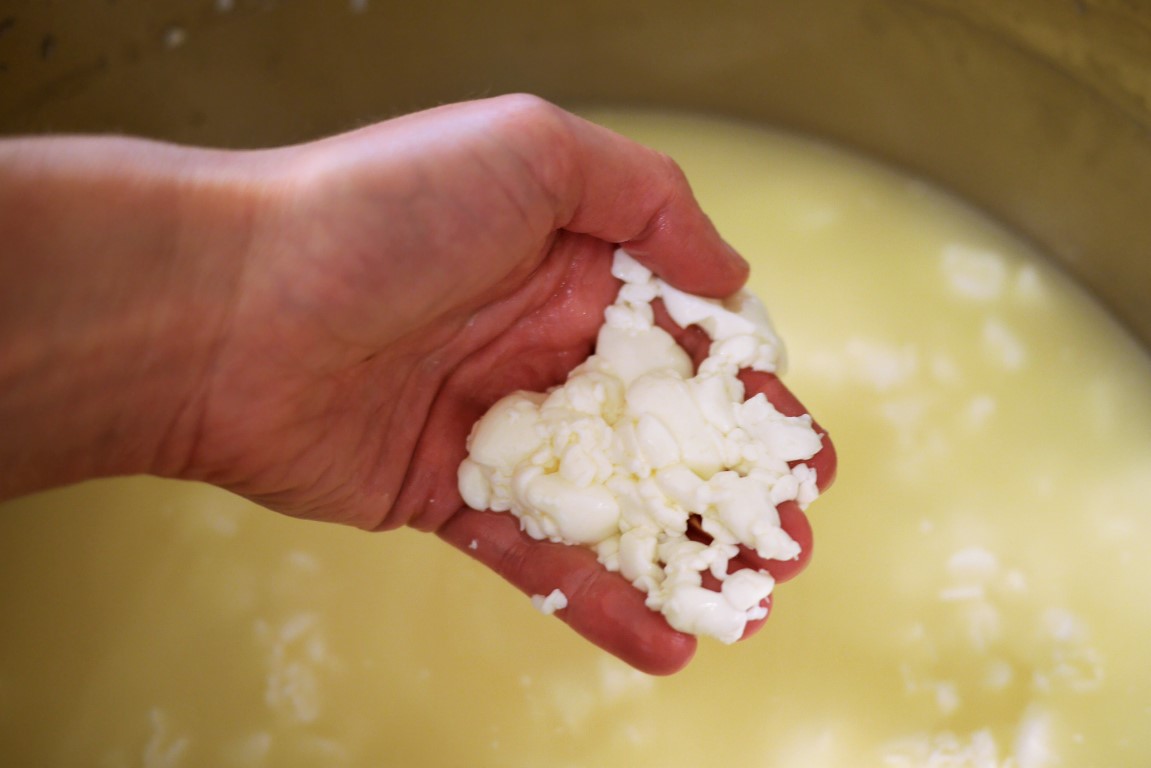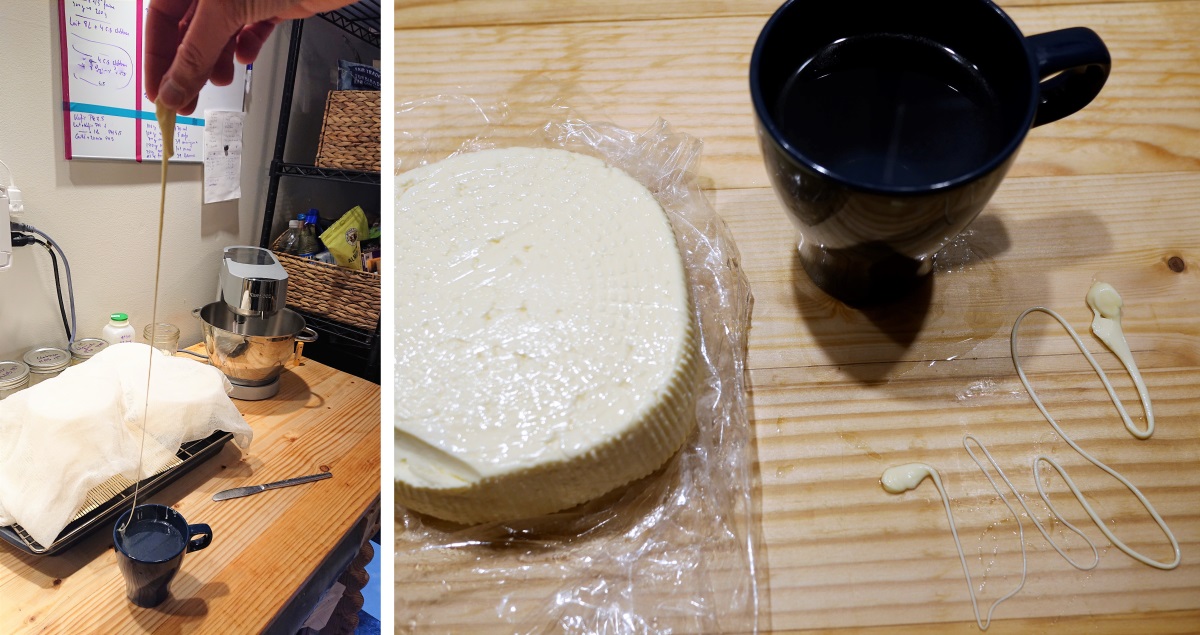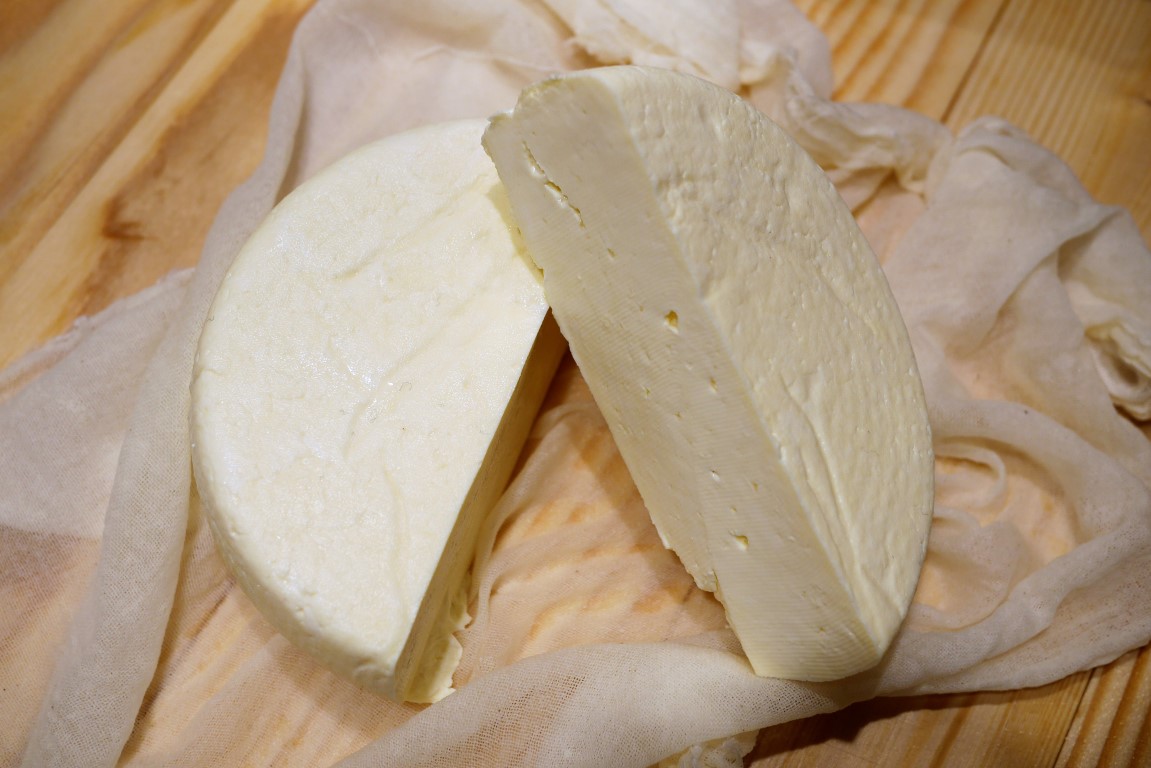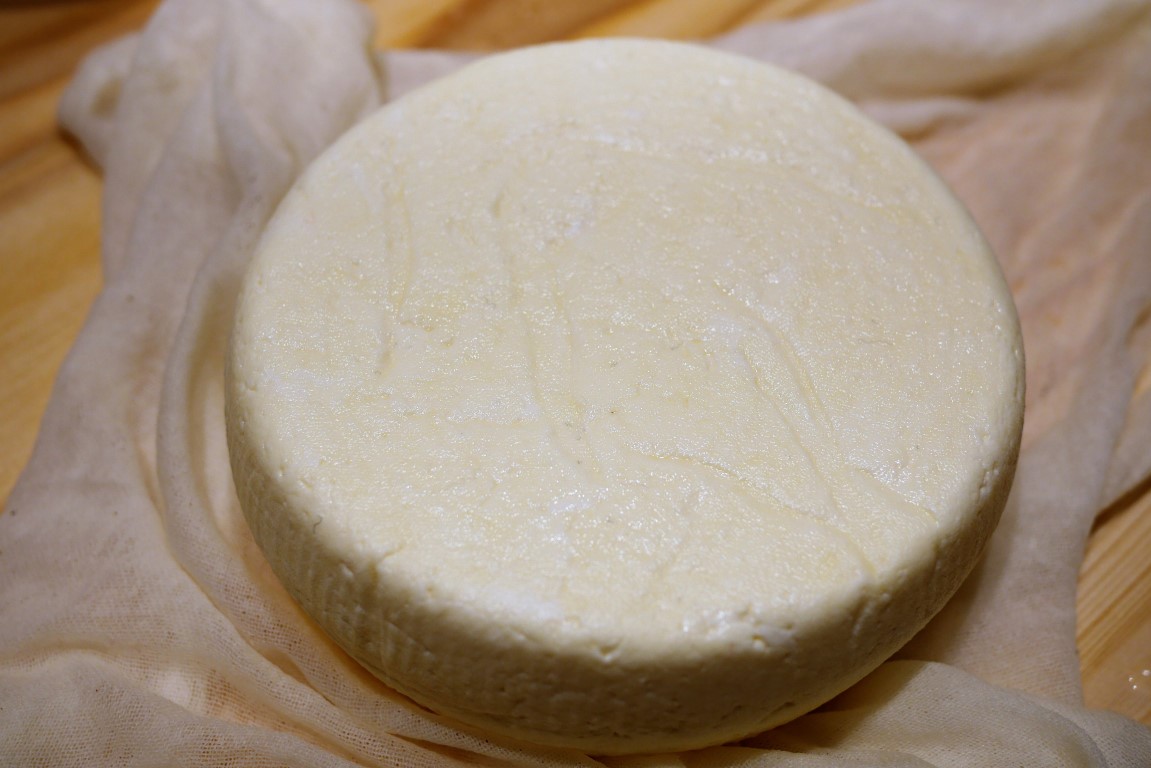When people ask me what I am missing from France in terms of food I am generally embarassed. I do not miss so much things (of course I am missing buying a good butter croissant on my way to work but I can deal with it!). Moreover if I cannot find a product I like I generally bake it myself. I love baking bread, brioches, croissants…
One day I really liked eating aligot. Aligot is a dish from the center of France (Aubrac region). Mashed potato is cooked with tome fraiche (a lot of tome fraiche! … and crème fraiche and butter). It looks a bit like fondue. It is simply delicious! Tome fraiche means fresh (or young) tome. It comes from the early stages of cheeses that come from the center of France like Cantal, Salers or Laguiole. Those cheeses are made from lightly warmed and pressed curd and aged for 6 months to 1 year. Tome fraiche is the fresh version of these cheeses before salting and aging.
But where could I find tome fraiche in Boston?
That’s how I decided to make it myself!
Ingredients
- 4L of milk, preferably the freshest raw milk
- 30ml of kefir, or 30ml of clabber or other cheese culture
- 1/4 tablet of Walcoren rennet, crushed and diluted in about 30ml of cold water wihtout chlorine (to decrease the chlorine contained in tap water just shake it and leave it rest for a while)
Material
- a big pot with a thick bottom (to keep the milk warm)
- a way of warming up the pan and keep a constant temperature (ring with diffuser, or a big basin of warm water)
- thermometer
- a knife or spatula to cut the curd
- cheese cloth or equivalent and strainer
- cheese mold [ optional ]
More details about material.
Duration
3-4h until draining, then 3-5h until curd is stretchable
Method
Timings are subject to change depending on your material and the quality of your ingredients. Take care of using well-cleaned material (use white vinegar, rinse with clear water and keep it dry in the open air). Wash your hands too!
Time : 00:00
Pour the milk in the pot and let it warm up very gently until it reaches 32°C. If you use a gas ring with a diffuser, take into account the intertia of the diffuser.
Time : 00:30, Temperature : 32°C
Add your culture starter. Stir together from bottom to top and for at least 2 minutes. Leave it ferment for about 1h. Keep the temperature to 32°C. You can put a lid on the pan to keep it warm.
Time : 01:00, Temperature : 32°C
The milk has started to ferment. You can now add the rennet. Pour gently and for at least 30 seconds so that it is well homogenized. Try not moving the pot after that step, so that the milk coagulates well.
The rennet will allow the milk to coagulate rapidly (more rapidly than how the milk would naturally). Given the milk quantity, its freshness and the amount of rennet, the milk is going to coagulate more or less rapidly. Try to always use the same milk to increase the chance of reproductibility and to know the best dosage of rennet.
Time : 02:00 +/- 1h, Temperature: 32°C
The milk has now started to coagulate. If you move a little the pot you should see it shaking slightly like a panna cotta. Check that the curd is ready with the following test: put your finger in the curd with an angle of 45 degrees and go up to cut the curd. If the cut is clear then the curd is ready. Otherwise wait for another 10-15 minutes and do the test again.
Time : 2:00 +/- 1h, Temperature : 32°C
It is now time to cut the curd into cubes of about 1cm width. Or you can cut the curd gently with your own hands by brassing the curd and cutting the curd by pressing the pieces with your fingers. Stirr slowly so that the curd does not fall onto the bottom of the pot.
Time: 2:00 +/- 1h, Temperature 32°C -> 35°C
Now warm up the curd very slowly (about 1°C every minute), while stiring so that the curd does not fall on the bottom of the pan. Once it reaches 35°C, continue stirring with your hand or a spatula until the curd is firm. Take a handful of curd and close your hand without pressing. When you open your hand the curd should stick together. If the test does not pass continue stirring for another 10 minutes and do the test again. When the curd is ready let it fall on the bottom of the pot for about 10 minutes.

Time: 2:30 +/- 1h
Remove whey from the pot with a laddle or a bowl without pressing the curd. Then you can take the curd with your hands and put it in a cheesecloth for draining. Shape the curd and press gently into a cheese mold. If you do not have a cheese mold, close the cheese cloth tightly. Place the cheese mold on a bowl or a drainer so that whey continues to drain for about 3 hours.
Time: 5:00 +/- 1h, Room temperature (~20°C)
It is now time to test that the curd stretches. In theory the curd is elastic when its pH ranges between 5.0 and 5.3. Milk has a pH of 6.8. The fermentation of the cheese curd increases the acidity and thus decreases the pH.
 Test if the curd is stretchable
Test if the curd is stretchable
If you have a pH-meter you can use it to test the acidity of your cheese but it is not necessary to buy one. You can take a small piece of curd and put it into boiled water for about 2 minutes. Then take the piece of cheese into your fingers and try to stretch it. Pour it into the water again and stretch it again. You should be able to stretch it into a long string. If it does not stretch then the curd is not ready. Leave it at room temperature for another 30min-1h. Then re-do the test.
You can now use your tome fraiche to make aligot! If you cannot use it right away, put it into your fridge for maximum 2-3 days. It continues to ferment in the fridge, but a lot slowlier than at room temperature.

You can now prepare aligot et enjoy it! The recipe is given here
